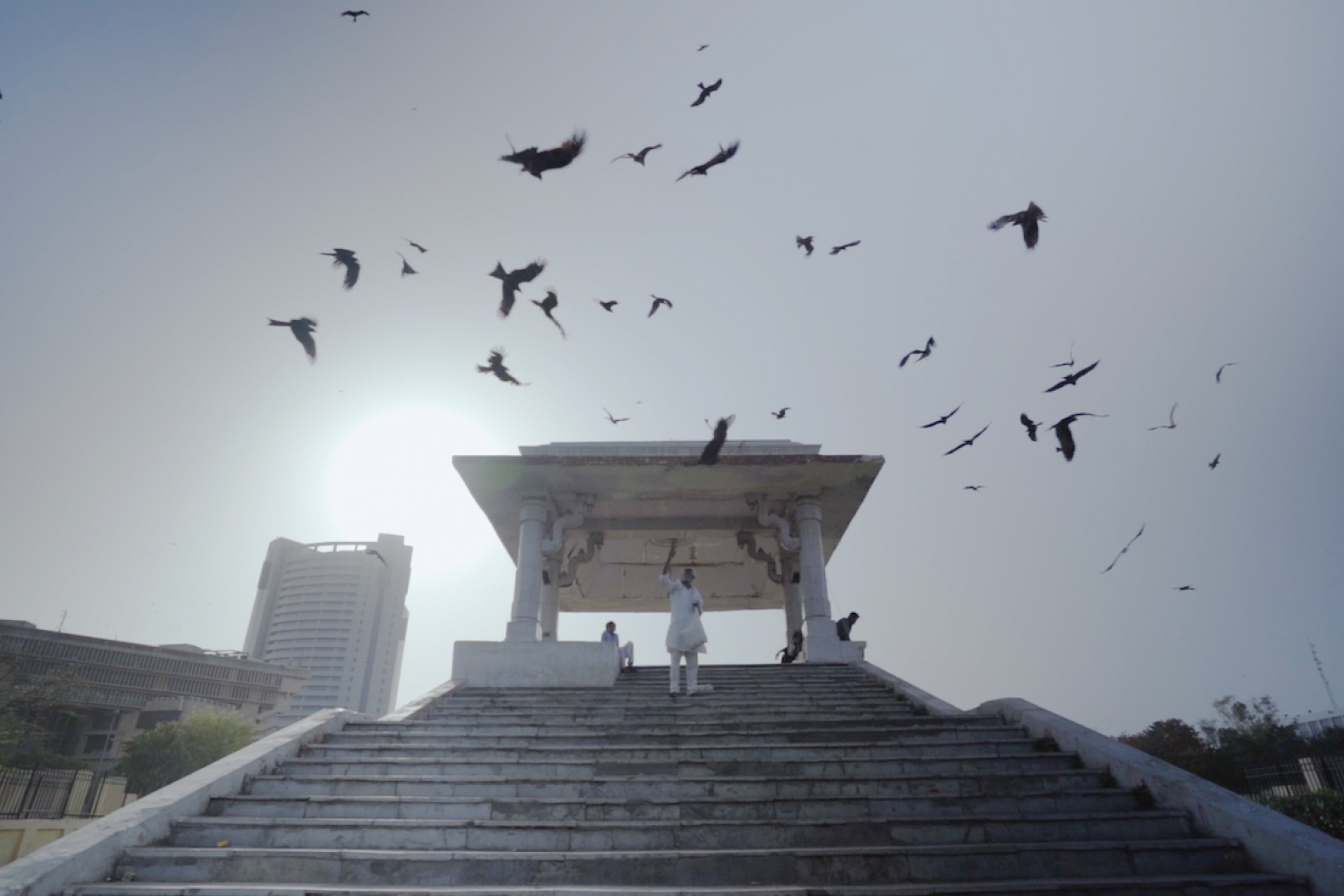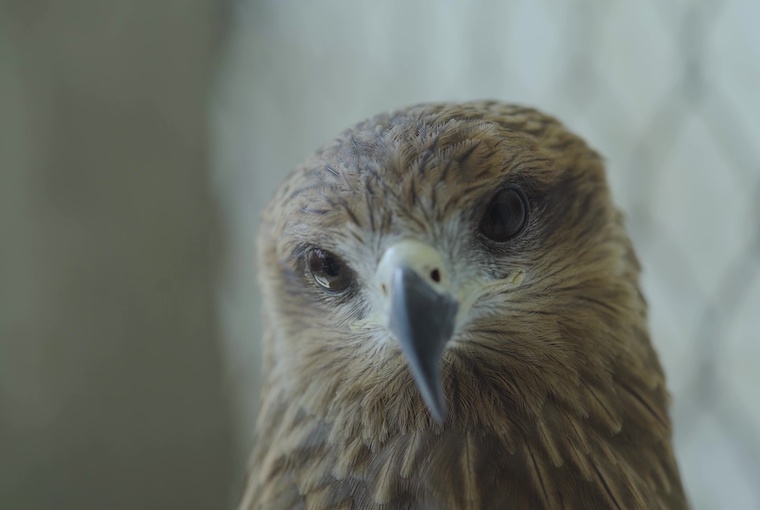

As a filmmaker, Shaunak Sen has this amazing trait where he picks the absurdities of everyday life and makes them remarkably cinematic and surreal. His first documentary, Cities of Sleep, took us into the heady world of insurgent sleeper’s communities as well as the infamous ‘sleep mafia’ in Delhi, where just securing a safe sleeping spot often becomes a question of life and death for a large number of people. His recent work, All that Breathes, traverses the lives of two brothers, Nadeem and Saud, who have this unspoken, weird, almost blind love for a majestic bird of the sky, the black kite. Against the backdrop of apocalyptic air and toxic eco-system, the two brothers decide to protect the bird, a casualty of these turbulent times. A Delhi native, Shaunak is currently in Copenhagen, giving final touches to his film that is scheduled to screen at the Sundance Film Festival in the World Cinema Documentary section. He tells us more about his life and the film below:
BEGINNINGS
I grew up in Delhi. I went to Delhi University, studied English Literature, and was very involved in theatre back in college for this fairly well-known group called The Players. After this, I sort of started working on films simultaneously. I made my first film, which was called Cities of Sleep, while I was doing my PhD from JNU. So, the academic work continued, and the film practice was also going on simultaneously. In fact, there’s been a kind of confluence from the very beginning. Even my recent film, All that Breathes, which essentially began with a vague and abstract idea of two men falling in love with one bird species, stemmed from the PhD while I was doing a fellowship in the UK at Cambridge University.
ELEMENTAL STAGES OF THE FILM
While at Cambridge, I was housed in the human geography department where a lot of people around me were working on human animal relations. Many people were concerning themselves with a frame of thinking where you look at the human and non-human relations through all kinds of lenses — philosophical, sociological, ethnographical, and so on. I was very interested in this kind of frame of thinking, so the foundational thought about wanting to do something about an obsessive relationship between men and birds came from there.
Initially, I wanted to make something that communicates the sense of breathing the air of Delhi and the gray monotone envelope that laminates the city, which is now fairly distinct. And the figure of the cheel, the black kite, or the tiny gliding dots that pepper the sky, is a part of living in Delhi. So this sort of weird triangulation of birds in the sky, the sky itself as a kind of gray hazy monotone and somebody who’s interested in the sky. And also a story that ties together the toxicity of the air and the ground. So, once I came back to Delhi, I started looking for people who were working with birds, and that that’s when I chanced upon the brothers Nadeem and Saud, and their remarkable story.

TREATMENT
All that Breathes, as compared to Cities of Sleep, was made on a much bigger scale and this film has far more lyrical sections. There’s also a kind of more controlled and aestheticized, set-piece kind of shooting. For this film, I could exercise more control, aesthetically. So, it’s not just the characters, it’s not just the case of me occupying the character’s world, but also the characters occupying my world. It’s a question of craft. In my previous film, Cities of Sleep, for instance, there was a handheld kind of a grungy feel. I was basically shooting with one DSLR in my hands.
Moreover, the ethical consumption, because of your presence, always changes everything. There are various levels to which your presence changes behaviour and there’s no getting around that. It’s false when people say how a filmmaker becomes a fly on the wall. You’re never a fly on the wall. You’re more of a bee that stings. Even at the edit table, you are working with around hundred hours of footage, that you are sculpting and chiselling into a seventy-five-minute-film. There’s a narrative, structure of plot development, character development. So, you’re constantly whipping it into the shape of the story you want it to be.
If the brothers were treating a bird, I’d figure out exactly how we are shooting. It was a far more synthesised and controlled environment. And the fact that this was happening indoors, in a small basement already gives a kind of bubble in which you can exercise more. This film provided a kind of boat to move from the classic, nuts and bolts; run and gun observational documentary, where you’re largely following the historical concurrence of what’s going on, to moving towards a more poetic register.
CONVERSATION WITH DOPS
I was interested in broadly three things. How does to translate their sense of awe? For that we focused a lot on how we are shooting the kite. I wanted a sense of a fairy tale gone wrong. When you think of Delhi, there’s a constant grey apocalyptic undertone to it. But at the same time, these are brothers who fell in love with something that flies. They used to look up to see the kites and be hypnotically drawn to it. And then when it would fall, they wouldn’t know where to treat it, so they started treating it themselves. You see the kite as injured beings falling from the sky; or enclosure crowded together in a cage. But there’s some sense of like how majestic they are and that goes on throughout the film.
Secondly, how do we shoot the tiredness of the house, where they were treating the bird; the basement is a kind of planet unto itself in the film. It’s like an industrial wound down kind of space, so how does one translate that, where there’s this absurd kind of duality to it. Lastly and which was the main thing was that how do we shoot or translate the experience of the skies in the city and how do we shoot the bird in the sky? I was very sure that we did not want to shoot it in a national geographic or a discovery channel sort of a way—no extreme tele shorts, no long lenses but shoot it as the naked eye sees it and find poetry in that.
In the film you will see, not just the narrative of the brothers and the kite but simultaneously we also see several images of animals around the city. The film begins with this long shot of a rat and dogs. And that’s a major part of the film. A lot of people have loved that part the most. And it’s also my favourite part of the film; long sections of the co-existence of human and non-human lives in the city.
SEEKING ANSWERS
The answer to this manic love of the broth- ers with the bird, sort of unfolds through the film. At first, they would go for meat tossing as kids, which they were taken by. And then, over time, as life happens, they start saving one bird and then you really start caring about the life of the bird. And before you know, there are hundred more birds that come. Now in the last twenty odd years, they’ve saved over twenty five thousand kites. And the true beauty of it is that they can’t ever pinpoint a finger to a reason why they do what they do. Without too much financial support they do it on their own accord.
It’s almost like a spiritual force. To think of it, the richness of the film is the fact that there’s no one reason for it. There’s plurality of things. And the reason adds a sort of mystery to the film because it’s an investigation of why people do what they do. And how does one understand this kind of obsessive behaviour because oth- erwise they have like the front seat to the apocalypse. Birds are literally falling off the sky and they see it; yet they just soldier on with a kind of wry humour and with a, kind of casualness that really interests me and a large part of the film is trying to communicate that
This article is an all exclusive from our May Bookazine. To read more such articles grab your copy here.
Text Hansika Lohani
Date 21-05-2022